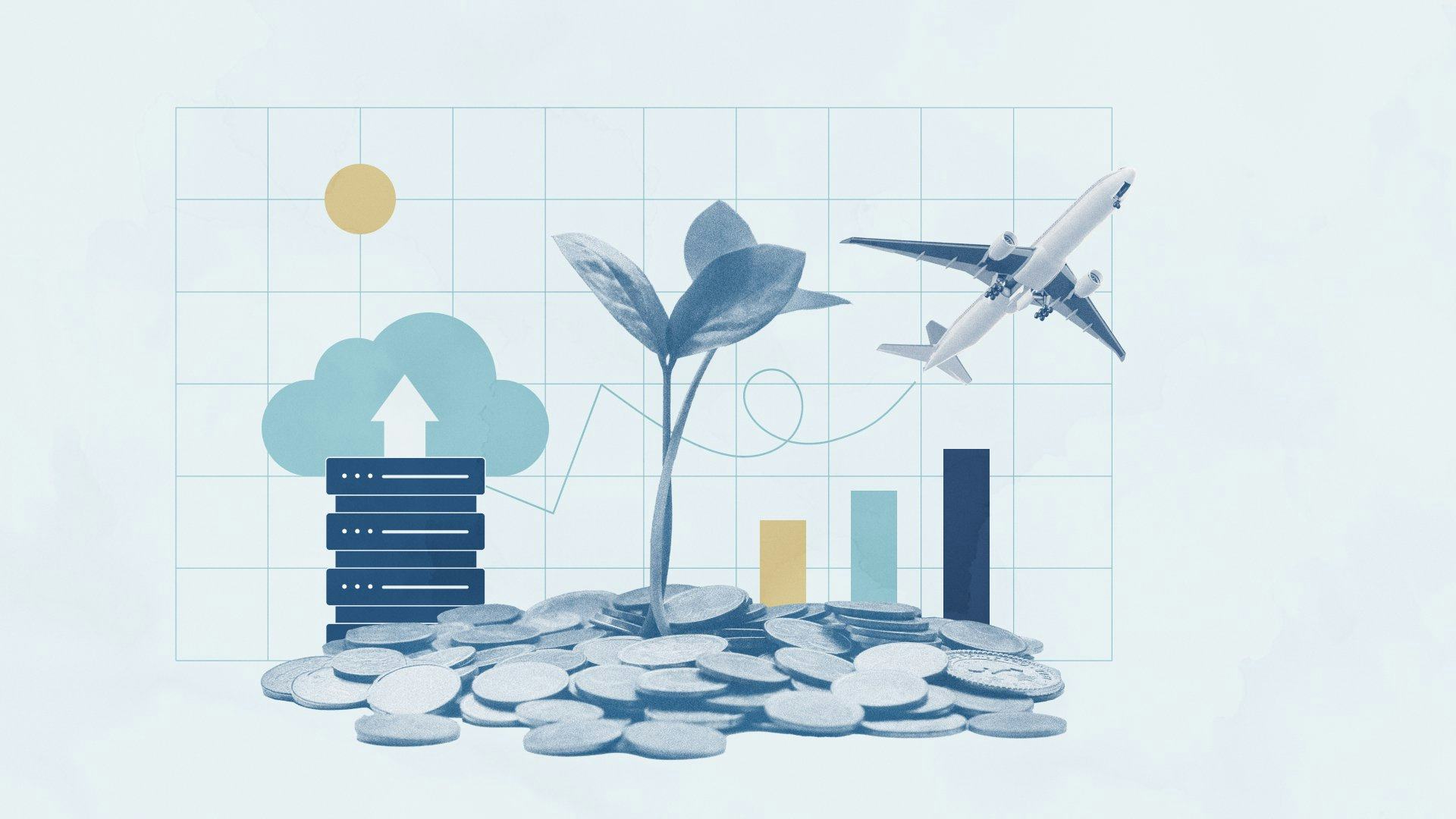Cooling economy but strong consumption

Inflation will remain persistent in the coming quarters and is unlikely to reach the Central Bank’s target during the forecast period. As a result, real interest rates are expected to remain high. Inflation will be 3.2% at the end of 2028 and real interest rates 2.6%.
Clear signs can be detected of slower economic activity and gradually easing tension in the labour market. Companies seem to have fewer plans for investment and hiring, and imports of various types of capital goods have declined. We expect persistently high interest rates to increasingly hold back investment in the coming 1-2 years. As a result, unemployment is likely to continue rising slightly over the next two years.
The export outlook is fairly good. High-tech sectors such as pharmaceuticals and medical product manufacturing along with aquaculture will contribute to increased export in coming years. In addition, heavy investment in data centres can be expected to boost goods export. Aluminium exports are expected to pick up following a period of stagnation last year, when cuts in electricity provision halted production. It is nevertheless clear that various export sectors may face headwinds in the coming 1-2 years: The strong króna makes conditions more difficult, as does uncertainty about international trade, and fishing quotas are expected to be limited next year. The bankruptcy of domestic airline Fly Play hf. does not help matters and could slightly reduce tourist numbers in the short term and increase unemployment. We expect the travel sector to remain flat in the coming years.
Offsetting the general slowdown in the economy is the strong financial position of Icelandic households. Despite slower wage growth, purchasing power can be expected to increase slowly but steadily, allowing consumers to generally maintain high consumption levels. A strong household deposit position also supports consumption and, despite easing tension in the labour market, we expect private consumption to increase throughout the entire forecast period, which extends to 2028.
Key points from the economic forecast
- Economic growth will be 1.5% this year, 1.7% next year, 2.2% in 2027, and 2.4% in 2028, assuming the forecast holds. Growth will be driven mainly by resilient consumption, as well as a slight increase in exports.
- Inflation eases only gradually, so the forecast, as it continues to be sustained by strong consumption, even with high real interest rates acting as a counterbalance. Average inflation is projected at 4.1% this year, 4.0% next year, 3.6% in 2027 and 3.3% in 2028.
- Interest rates will decline slowly and steadily, in line with the gradual disinflation trend. We forecast a policy rate of 7.25% by the end of next year, 6.50% by the end of 2027 and 5.75% by the end of the forecast period.
- Private consumption is expected to increase gradually to the forecast horizon. Accumulated savings from recent years boost demand and increased purchasing power supports consumption. Private consumption grows most this year, or by 3.0%. After that, high real interest rates and slower wage growth will dampen the pace somewhat, with private consumption increasing by 2.3% next year and 2.1% in 2027.
- Investment increases in most years of the forecast period but will be largely offset by imports of investment goods, especially in sectors such as data centres and land-based aquaculture.
- Residential housing investment prospects are relatively weak, with a 3.5% contraction expected this year and only modest growth in the years that follow.
- Public investment is expected to increase only slightly this year, but then pick up by 8.5% next year, driven partly by investment in transport infrastructure and the construction of the new National University Hospital.
- This year and next, business investment will be driven by data centre projects and investments related to land-based aquaculture. A period of stagnation is expected across several other sectors until the final two years of the forecast period, when business investment, particularly in the energy sector, recovers. Nevertheless, overall business investment is expected to contract in 2027, once data centre development comes to an end. - The export outlook remains relatively stable and we forecast moderate export growth all years of the forecast period. We expect exports of aluminium products to increase next year, exports of marine products to decline and the tourism sector to remain flat. At the same time, we expect high-tech industries such as pharmaceutical and medical product manufacturing, as well as land-based aquaculture, to contribute to export growth in the coming years.
- The expected slowdown in economic activity will likely be reflected in a gradual easing of labour market pressures. We expect unemployment, which is estimated to average 3.8% this year, to rise slightly to 4.1% next year and then stabilize at around 4.2% on average during the final two years of the forecast period.
- Increased slack in the labour market pacifies wage growth, with wages projected to rise at a more moderate pace than in recent years. After several significant pay increases this year, which could average around 7.8%, we expect wages to grow by 6.2% next year, 5.5% in 2027 and 5.4% in 2028.
- We expect housing price increases to continue slowing until the middle of 2026 and forecast a 5.2% average increase in housing prices this year and 3.3% next year. After that, the housing market is projected to gradually regain momentum, but with moderate price increases: 5.0% in 2027 and 6.0% in 2028.









